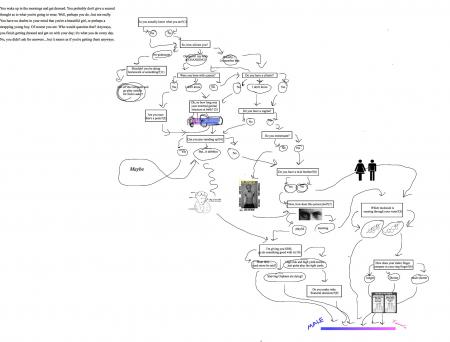Serendip is an independent site partnering with faculty at multiple colleges and universities around the world. Happy exploring!

The Groundings of a Commonwealth: Workshop on Forging Environmental Ethics Through Reading and Telling Stories
I created my third web event with every intention of deriving from it a workshop meant to bring together Israeli and Palestinian young adults over shared literatures. Literature was a medium through which, I had argued, right relationships had the space and time to emerge, and was a form particularly suited toward broader socio-political change. While I was excited about this final web event and its possibilities, I was also somewhat daunted by my own distance from the site of relationship building. I was also concerned by the spatial impracticalities of actually translating this workshop into action. I have become, through the course of the semester, very interested in how academic conversation can be used as groundwork for activity and doing; it seemed duplicitous to consider in my postings how “a group of listeners becomes a group of actors,” and even create frameworks for such a transition, but have no intention of taking this kind of action myself.

Final Performance
For our final performance, Sam and I organized two games that inspired by two articles that we felt impressed: Pedagody of the Opressed by Paulo Freire and The Achivement of Desire by Richard Rodriquez. We hope it would make our performance more interactive and try to cover some of the main themes we talked about in class, including: social mobility and education, interactive education and generally, the affects on class on people's behaviors in and approaches to their education. Here I attached our script used for the performance:
21 QUESTIONS
Occupations will be posted on the backs of each participant.
Have sections of the room help people guess who they are by answering their questions.
Rule is that you can only ask yes or no questions.
- First Round: Basic (doctor, lawyer, Michael Jordan)
- Second (more difficult) Round Use money to signify the amount of questions that can be allotted to each participant (a quarter for 25 questions, dime for 10 questions, a nickel for 5 questions)
ROUND 1 EXPLANATION:
Our Final Presentation
First off, I would like to commend every person for her insightful, creative, and moving representation of the issues surrounding class and education. The presentations caused me to both reflect on this course and further my thoughts. One thing I thought was neat about the presentations was that the groups were integrated from both classes. The variety of approaches to this assignment reminded me of just how successful and progressive collaborative diversity can be. The diversity of the presentations really amazed me – they showed the many ways we can approach the issue of class, the wide variety of issues surrounding class (it’s not quite as simple as one might think!), the diversity of thought about class, and, most importantly, how every single one of these topics influences and furthers the “class” discussion (no pun intended.) It was also interesting to see how some people were particularly fascinated and influenced by specific authors and their ideas. I feel like understanding what has been written about class and education and either furthering it or arguing against it is one of the most crucial aspects in continuing the discussion within the academic world. I focused paper number eleven on the way in which academic writing restricts access to thoughts and ideas, so I was especially excited to see academia engaged in so many creative ways: further proof that writing is not the only way to share and change thoughts and ideas.




